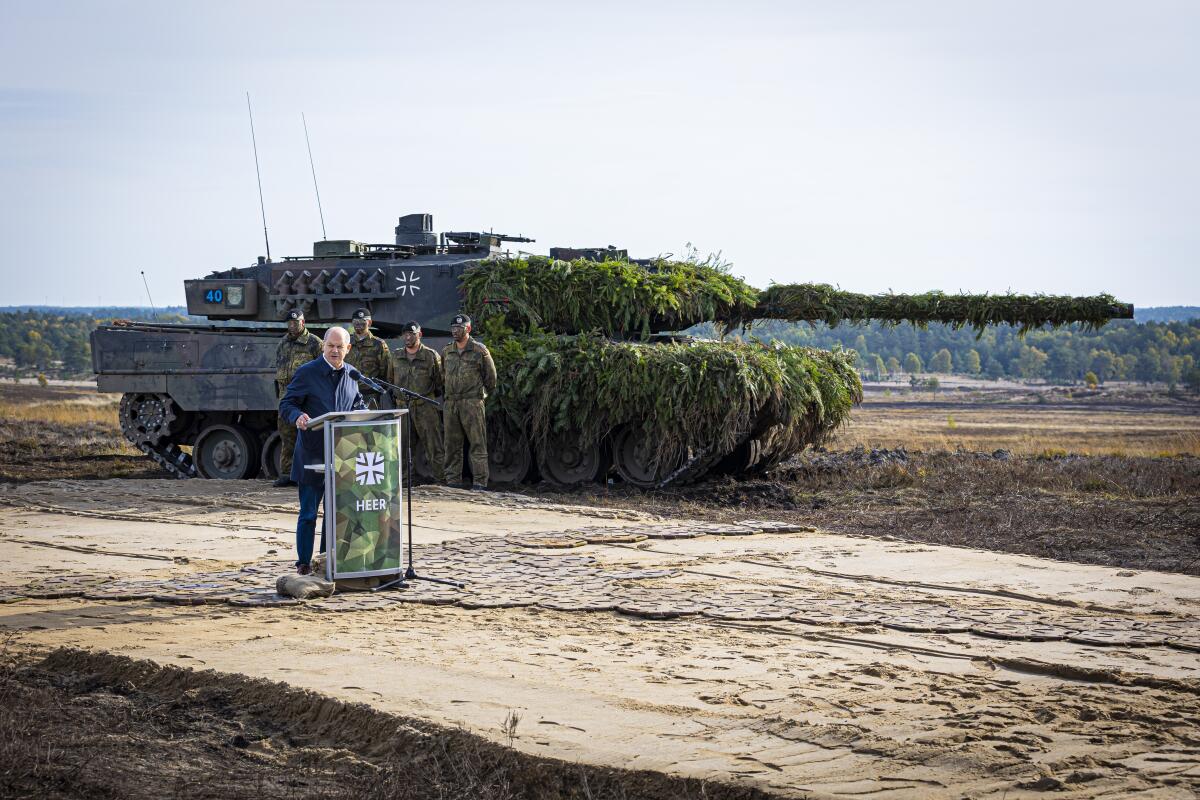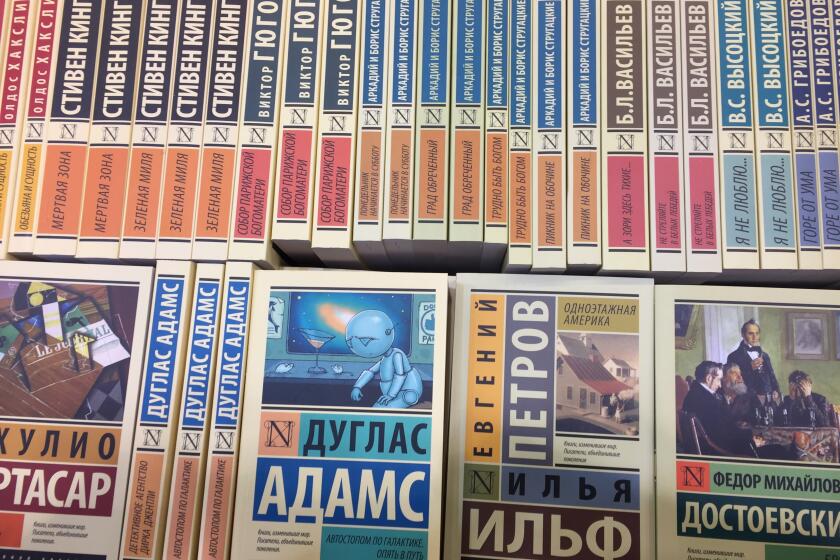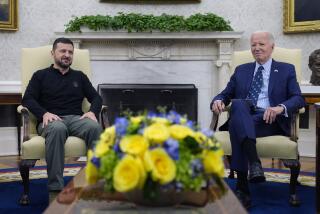Op-Ed: Can Biden keep sending Ukraine weapons without provoking Russia?

The Biden administration announced this week that the U.S. will provide 31 Abrams M-1 tanks to Ukraine, and Germany said it will send 14 of its Leopard tanks to Kyiv.
The tank deal and the first anniversary of the start of the war next month offer an opportunity to evaluate the effectiveness and future direction of U.S. military aid to Ukraine, which has been authorized at more than $27 billion in the last year alone — an annual amount not seen since the height of the Vietnam War.
American arms and training, combined with the skill and courage of Ukrainian forces, have been highly effective in blunting Russia’s attack and rolling back some of its initial territorial gains. The question is how to continue supporting Ukraine without inching closer to a direct U.S.-Russian confrontation.
NATO nations have remained remarkably united in their support for Kyiv. Lopsided economic assistance could break it down.
The tank deal itself will not be a game-changer militarily. The relatively small numbers involved, and the fact that the U.S. systems reportedly may not arrive in Ukraine for six months to well over a year, are just part of the issue. Daniel Davis, who served in an armored cavalry regiment in a devastating tank battle with Iraqi forces in the 1991 Persian Gulf war, has pointed out that to be fully effective in using them, U.S. personnel required more than a year of training.
The systems are also extremely difficult to maintain, as undersecretary for defense policy Colin Kahl noted recently, suggesting that the Pentagon’s initial reluctance to supply the tanks was because the Defense Department “has been very focused on ... not providing the Ukrainians systems they can’t repair, they can’t sustain, and that they, over the long term, can’t afford.” These realities greatly diminish the tanks’ role on the battlefield.
So far, the Biden administration has taken some care to avoid providing advanced systems that might provoke a dangerous response from Russia. But the administration’s idea of what might be considered provocative has been shifting. That’s evident in the recent approvals to provide Patriot missile systems and the M-1s — systems that the administration had originally withheld, partly out of concern over escalation.
There is no objective measure of what might provoke escalation on the part of Moscow, or a reliable prediction of what that escalation might entail. But the tank announcement has sparked fears in Russia that the U.S. and the North Atlantic Treaty Organization may supply ever more effective and sophisticated systems to Ukraine — which could incite a harsh Russian reaction.
For nearly a year, those worries — including fears that Russian President Vladimir Putin would use a tactical nuclear weapon — have guided the West’s response to the Russian invasion. Such risks could increase if the war drags on and Putin becomes worried about being defeated or deposed. The Biden administration should proceed with caution in deciding what level of weaponry to provide Ukraine in the coming year, when it will probably face intense pressure — both within the U.S. and from Ukrainian officials — to provide Kyiv with combat aircraft and long-range missiles.
Another concern raised by analysts of U.S. military aid to Ukraine has been the danger that American weapons could fall into the wrong hands. There is no indication that this has happened in any significant way thus far, but as the war continues the dangers of weapons being diverted may rise.
Unlike during the Cold War, U.S. students now shy away from studying Russian. But we need to read the great authors at the geographic and political fringes of the former Soviet Union writing in that language.
In the conflicts that the U.S. has been involved in over recent decades, American weapons have ended up with adversaries of the U.S. or of U.S. allies, including the Taliban, Islamic State and the Houthi rebels in Yemen. Cold War-era stocks of weapons from former Warsaw Pact nations and former Soviet republics — including Ukraine — have been resold by arms dealers to repressive regimes throughout Africa, and reportedly even to terror groups such as Al Qaeda. This history of diversion suggests that a strict monitoring system of arms supplied to Ukraine should be established now to head off potential global proliferation of these weapons in the future.
Perhaps the most important lesson in providing U.S. military aid is that arms alone won’t end the war. They must be accompanied by a diplomatic track if a long war or a dangerous turn is to be averted.
There are no immediate prospects for a negotiated end to the Ukraine war. But given the threats of widespread suffering or the risk of a spreading conflict, it’s not too soon to start preparing the ground for an eventual settlement. It is essential to continue helping Ukraine to defend itself, but that assistance must be accompanied by diplomatic initiatives if the most dangerous potential outcomes of the war are to be avoided.
William D. Hartung is a senior research fellow at the Quincy Institute for Responsible Statecraft.
More to Read
A cure for the common opinion
Get thought-provoking perspectives with our weekly newsletter.
You may occasionally receive promotional content from the Los Angeles Times.












